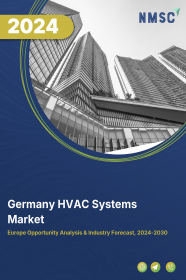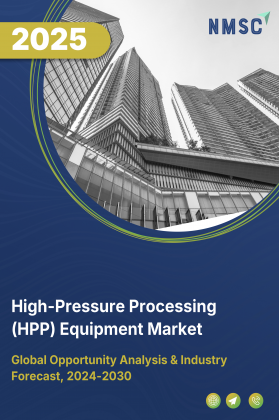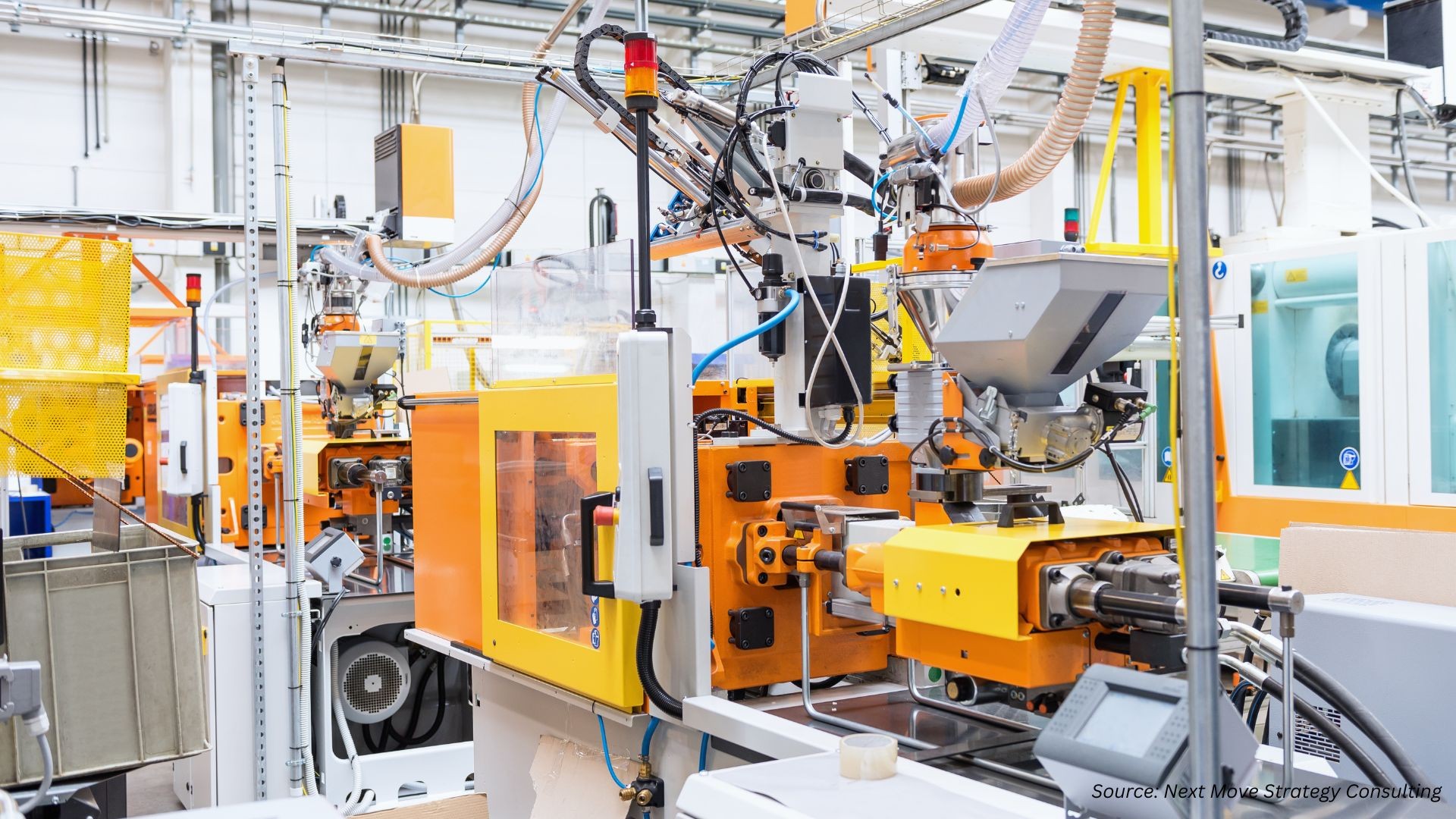
Germany HVAC Systems Market by Equipment (Room‐Level Air Conditioners, Split Air Conditioners, Packaged & Central AC Units, Chillers, Heating Equipment, Ventilation Equipment, Humidity Control, Cooling Towers, and Controls & Thermostats), by System Type (Centralized Systems, and Others), by Implementation Type, by Technology (Inverter Technology, and Others), by Energy Efficiency, by Capacity, by Installation, by End User – Global Opportunity Analysis and Industry Forecast, 2024– 2030
Industry: Construction & Manufacturing | Publish Date: 24-Oct-2025 | No of Pages: 216 | No. of Tables: 236 | No. of Figures: 181 | Format: PDF | Report Code : CM1924
Market Definition
The Germany HVAC System Market size was valued at USD 8.77 billion in 2023, and is predicted to reach USD 12.34 billion by 2030, at a CAGR of 4.4% from 2024 to 2030.
HVAC (Heating, Ventilation, and Air Conditioning) refers to the technology and systems used in buildings to regulate indoor environmental conditions such as temperature, humidity, and air quality to ensure comfort and safety for occupants. Heating systems provide warmth during colder months, ventilation systems circulate and replenish indoor air, and air conditioning systems cool and dehumidify indoor air during warmer months.
HVAC systems offer several advantages, including improved occupant comfort and health, increased energy efficiency leading to cost savings, better indoor air quality through filtration and ventilation, precise temperature control for enhanced productivity in commercial settings, and protection of building infrastructure from extreme weather conditions. Additionally, these systems can be designed to meet specific requirements, contributing to sustainability goals by reducing carbon emissions and promoting eco-friendly practices in building operations.
Ambitious Energy and Decarbonization Regulations Accelerate HVAC Investments
Germany’s tightened Building Energy Act (GEG) requirements and the EU’s updated Energy Performance of Buildings Directive (EPBD) oblige both new and existing buildings to hit ever-higher efficiency benchmarks. From 2024 onward, any replacement of fossil-fuel heating systems must integrate at least 65 % renewable energy, pushing developers and homeowners toward heat pumps, hybrid systems, and highly insulated ventilation solutions. Complementary grant programs through BAFA and KfW provide bonus subsidies for ground-source heat pumps and deep-retrofit packages, ensuring that regulatory compliance delivers measurable carbon savings and lifecycle cost benefits.
Digitization and Iot-enabled HVAC Solutions Drive Operational Optimization
As part of Germany’s Smart Buildings Initiative, facility managers increasingly prioritize systems that offer real-time monitoring, analytics-driven tuning, and predictive maintenance. IoT-enabled sensors, cloud-based control platforms, and machine-learning algorithms now underpin next-generation HVAC packages, enabling precision temperature zoning, adaptive airflow modulation, and remote fault detection. This digital transformation not only reduces energy consumption by up to 20 % in larger installations but also shifts the value proposition from one-off equipment sales toward ongoing service contracts and performance-guarantee models.
High Capital Expenditure and Financing Obstacles Slow Adoption
The transition to advanced HVAC technologies—particularly renewable-integrated heat pumps, hybrid systems, and IoT-enabled controls—entails substantial upfront equipment and installation costs. Recent increases in financing rates have further constrained access to low-cost capital, making it difficult for building owners and small contractors to justify immediate investment despite long-term energy savings. While federal and state subsidy schemes exist, their complex application processes and variable funding levels across Länder create uncertainty and delay. As a result, many end-users postpone modernization projects or opt for lower-cost, less efficient solutions, impeding the broader uptake of high-performance HVAC systems.
Renewable-integrated HVAC and Demand-response Services Drive Next-gen Growth
Germany’s push for sector coupling and flexible power grids is opening new avenues for HVAC providers to bundle heat-pump installations with energy-storage and demand-response solutions. By integrating thermal storages, smart control algorithms, and real-time grid signals, system operators can shift heating and cooling loads into periods of excess renewable supply—supporting grid stability while lowering customer energy bills. This service-based model moves beyond one-time equipment sales toward ongoing performance contracts, unlocking recurrent revenue streams for manufacturers and installers.
At the same time, collaborative pilot projects between utilities, aggregators, and HVAC specialists are creating templates for aggregated demand-response portfolios. Aggregators can pool capacity from residential and commercial heat-pump systems to bid into balancing markets, creating new value for end-users who earn incentives for peak-load reduction. As Germany accelerates its national hydrogen and renewable-power targets, these flexible, grid-interactive HVAC solutions will become integral to energy management strategies—positioning market players at the heart of the country’s decarbonized, digitized energy ecosystem.
Competitive Landscape
The market players operating in the Germany HVAC System market include Robert Bosch GmbH, Daikin Industries Ltd, Carrier Global Corporation, Mitsubishi Electric Corporation, Johnson Controls International Plc, Vaillant Group, Viessmann Group, Stiebel Eltron GmbH & Co. KG, Panasonic Holdings Corporation, LG Electronics Inc, Midea Group Co., Ltd, FlaktGroup, Trane Technologies Plc, NIBE Group, Wolf GmbH (Ariston Group).
Germany HVAC System Market Key Segments
By Equipment
-
Room-level Air Conditioners
-
Window
-
Portable
-
Cassette (ceiling-mounted)
-
Floor-standing Console
-
-
Split Air Conditioners
-
Single-split (1 Indoor + 1 Outdoor)
-
Multi-split (≥2 Indoors + 1 Outdoor)
-
VRF/VRV
-
-
Packaged and Central AC Units
-
Rooftop Packaged Units
-
Self-contained Packaged Units
-
Central Chiller and AHU Systems
-
-
Chillers
-
Air-cooled
-
Water-cooled
-
Absorption
-
-
Heating Equipment
-
Heat Pumps
-
Furnaces
-
Boilers
-
Unit Heaters
-
-
Ventilation Equipment
-
Air Handling Units (AHUs)
-
Fans And Blowers
-
Air Filtration Systems
-
Air Purification Systems
-
-
Humidity Control
-
Humidifiers
-
Dehumidifiers
-
-
Cooling Towers
-
Controls and Thermostats
By System Type
-
Centralized Systems
-
Decentralized Systems
-
Hybrid Systems
By Implementation Type
-
New Construction Buildings
-
Retrofit Buildings
By Technology
-
Inverter Technology
-
Non-inverter Technology
-
Smart/iot-enabled
-
Conventional
By Energy Efficiency
-
1 Star
-
2 Star
-
3 Star
-
4 Star
-
5 Star
By Capacity
-
Up to 1.5 Ton
-
1.5-3 Ton
-
3-5 Ton
-
Above 5 Ton
By Installation/mounting
-
Wall-mounted
-
Ceiling-mounted
-
Floor-standing
-
Ducted
-
Window-mounted
-
Portable
By End User
-
Commercial
-
Offices
-
Hospitality (Hotels, Restaurants)
-
Healthcare
-
Education
-
Retail
-
Airports
-
-
Residential
-
Industrial
Key Players
-
Robert Bosch GmbH
-
Daikin Industries Ltd.
-
Carrier Global Corporation
-
Mitsubishi Electric Corporation
-
Johnson Controls International Plc.
-
Vaillant Group
-
Viessmann Group
-
Stiebel Eltron GmbH & Co. KG
-
Panasonic Holdings Corporation
-
LG Electronics Inc.
-
Midea Group Co., Ltd.
-
FlaktGroup
-
Trane Technologies Plc.
-
NIBE Group
-
Wolf GmbH (Ariston Group)
Report Scope and Segmentation
|
Parameters |
Details |
|
Market Size in 2023 |
USD 8.77 Billion |
|
Revenue Forecast in 2030 |
USD 12.34 Billion |
|
Growth Rate |
CAGR of 4.4% from 2024 to 2030 |
|
Analysis Period |
2023–2030 |
|
Base Year Considered |
2023 |
|
Forecast Period |
2024–2030 |
|
Market Size Estimation |
Billion (USD) |
|
Growth Factors |
|
|
Companies Profiled |
15 |
|
Market Share |
Available for 10 companies |
|
Customization Scope |
Free customization (equivalent up to 80 working hours of analysts) after purchase. Addition or alteration to country, regional, and segment scope. |
|
Pricing and Purchase Options |
Avail customized purchase options to meet your exact research needs. |

















 Speak to Our Analyst
Speak to Our Analyst
























